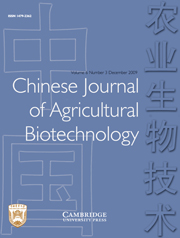No CrossRef data available.
Article contents
Detecting genetically modified Roundup Ready soybean ingredients in foodstuffs by nested and semi-nested PCR
Published online by Cambridge University Press: 12 February 2007
Abstract
DNA was extracted from kernels of genetically modified (GM) Roundup Ready soybean (Glycine max), made to a series of dilutions, and then used template for amplification by nested PCR and semi-nested PCR. The template comprising a 10−14 g/μl DNA solution could be amplified by both nested and semi-nested PCR. Various soybean foodstuffs and foods from a local supermarket were tested by nested and semi-nested PCR. The soybean housekeeping gene lectin could be amplified from 10 types of food (17 different brands), including soybean oil, sauce, lecithin, tofu, soybean milk and soy milk. The CaMV35S-CPT4 segment was amplified from eight types of food (14 brands), indicating that these foods were manufactured using soybean Roundup Ready ingredients. Therefore, nested and semi-nested PCR could serve as efficient methods in detecting GM soybean in foodstuffs and foods.
Information
- Type
- Research Article
- Information
- Copyright
- Copyright © China Agricultural University and Cambridge University Press 2004

